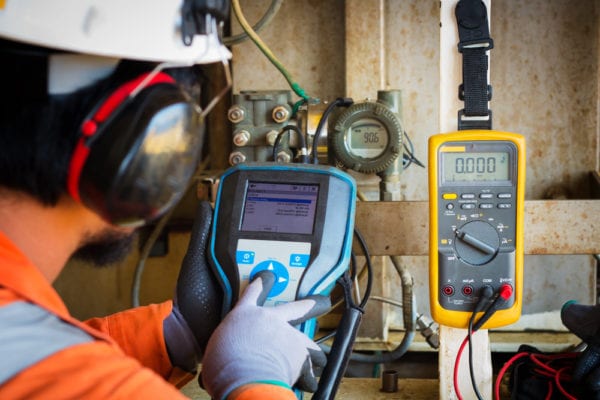
Let’s face it—money makes the world go ‘round. Two important things professionals consider when making a significant business-related purchase are: will I make my money back and how soon?
While computerized maintenance management system (CMMS) software will make maintenance operations more efficient, it will also be an investment for the organization. Both upper management and C-suite executives need to know that the system will save the organization money in the long run while improving the maintenance process.
In this blog post, you will learn how to calculate the potential ROI for your CMMS. We will discuss how to estimate your current maintenance costs, the value a CMMS provides, and how to calculate when you can expect to see a return on investment.
What is CMMS Return on Investment (ROI)?
ROI stands for return on investment. In simple terms, CMMS ROI measures how much value you’ve gained from a CMMS relative to the amount of money invested in it, within a set timeframe. CMMS ROI is typically used to justify the purchase of a CMMS or analyze the impact a CMMS has had after being used for some time. This article focuses on the former. To accurately determine your CMMS ROI, you apply the standard ROI formula:

In this equation, “CMMS Cost” is the purchase price of the software, in dollars, including any costs for implementation assistance, customer support, and other services. “CMMS Value” is the dollar value of potential savings across all areas of your maintenance operation. Each of these variables is covered below.
ROI also takes into account a timeframe. It is important to select a long enough period of time to account for costs such as implementation, training, and consulting, as well as the realization of long-term benefits the system provides. Additionally, it takes time to get a system up and running. Your team may not be fully using the software for 1-3 months after purchase.
Due to these factors, you must select an appropriate timeframe for ROI calculation. Upper management may want to see CMMS ROI for periods of 1 year, 5 years, and 10 years or more.
How to Interpret CMMS ROI
CMMS ROI is a simple measurement of the software’s value to the organization in terms of cost savings. When CMMS ROI calculations yield a positive value (e.g., a value greater than 0), it means the investment is creating value and saving money.
On the other hand, a negative value (e.g. a value less than 0), means that the value has not yet outweighed the cost. This does not mean that the CMMS will never provide value, but you may need to adjust your expectations for when you’ll see a return. The payback period is covered later on in this article.
Determining CMMS Cost
CMMS cost is relatively easy to figure out – it is what you paid for the system and other services. This includes the costs of licenses, implementation assistance, service and support agreements, and anything else needed to implement the software, including user training.
Don’t forget about any hardware or additional software that may be purchased to support the CMMS. You may want to factor in the cost of computer upgrades, mobile devices, label printers, and other infrastructure into your CMMS cost calculation.
What’s included in a CMMS purchase varies from vendor to vendor. CMMS providers work with you to help you find the most cost-effective solution to meet your needs, and there are many ways this can be accomplished.
Further Reading: 10 Things to Consider Before Choosing a CMMS
Determining CMMS Value
Determining CMMS value when no system is in place may sound challenging, but it can be done. Let’s approach this calculation with a two step process. First, you must know your current maintenance costs. Don’t worry if you don’t have exact numbers – this article will help you find the information you need. Second, you must determine how much the CMMS will help you save. We’ll provide an example of this later on.
Areas of Maintenance Costs
The first part of determining your CMMS ROI is figuring out your maintenance costs. This part of the equation is easier to find, so it makes for a good starting point. More likely than not, your cost drivers are already apparent to you. Examples of common maintenance management costs include:
- Work order generation, processing, and close out
- Inventory management, including expedited delivery fees, over-ordering, and other overhead
- Condition audits
- Report generation
- Labor costs from overstaffing or overtime caused by understaffing
- Unnecessary asset downtime
- Overdue work orders and service requests
- Time spent on regularly occurring administrative tasks
How to Find Approximate Maintenance Costs
Organizations that are diligent about tracking maintenance costs may already have information available. If your cost tracking is less formal, you may need to pull from multiple sources.
For example, the accounting team may provide overall maintenance, labor, and material costs. The purchasing team may provide data from inventory purchases. Historical work orders can be used to estimate costs, assuming cost tracking is in place.
If monetary costs are not easily calculated, you may have to take a different tact. You might first think of costs in terms of time, and then later determine an average cost to the time period. Ask questions such as those listed below:
- How many hours of emergency maintenance do you experience in a week/month/year?
- How many hours of lost production time do you average weekly/monthly/annually?
- How much time is spent creating and closing work orders each week/month/year?
Be sure to calculate CMMS costs based on the same timeframe being used for the CMMS ROI calculation. Using the same time intervals is important for accurate results. For example, if using a yearly timeframe, multiply monthly average costs by 12 (or weekly average costs by 52) to determine average costs for the entire year.
After estimating all known maintenance management costs, both direct and indirect, enter the total into the “CMMS Cost” portion of the CMMS ROI equation. Don’t worry if the number seems high – a CMMS has the potential to significantly reduce this value.
Value Created with CMMS
In order to determine the total CMMS value, you need to calculate the costs and savings within each area of maintenance management. CMMS software has many features that create value by way of reducing maintenance management costs. Over time, this value will lead to a significant return on your CMMS investment. Consider the following example:
A hypothetical company, National Widgets and Supplies, is running a $60,000 asset that has an expected lifespan of 15 years. This equates to a cost of $4,000 per year to run the asset. If using a CMMS extends the asset’s life by 6 months, the company will save approximately $2,000 ($129 saved per year for 15 and one half years).
The example above is just one example of how a CMMS provides value. The following sections outline the numerous ways a CMMS adds value and saves you time and money. Using a little math, you can determine the value a CMMS brings to your organization.
As a disclaimer, the numbers you see below are industry averages and are not guarantees. However, with the right system in place, you too can achieve these cost savings.
Work Order Generation, Processing, and Closure
The ability to automatically create, process, and close work orders rather than using pen and paper or spreadsheet, can easily save you up to 50%. The time freed up can be used to accomplish more maintenance tasks more quickly, or to reduce overall maintenance labor costs.
Inventory Management
In order to complete or fulfill work orders, you need parts and supplies. With a CMMS, you’ll be able to optimize inventory management, saving you up to 50% on excess inventory purchases and expedited delivery fees. Maintenance management software allows you to keep track of inventory counts in real time, as well as send notifications via email when parts are due for reorder.
Condition Audits
Numerous costs are associated with on-site equipment condition audits. These costs can include the hourly rate for the contractor’s time, data analysis and reporting fees, and other costs such as additional fees based on the size of your facility, scope of the audit, and the volume of documentation that must be created. With maintenance management software, audits will be faster, easier, and possibly less frequent, saving you up to 80%.
A CMMS keeps detailed equipment records so you can easily check information related to the status of your machines. You’ll also be able to find patterns in reoccurring repairs to help you make more informed decisions about maintaining versus replacing assets, lowering the downtime of your equipment and troubleshooting breakdowns faster, leading to improved asset life and reliability.
Report Generation
Any of this information can be put together through report generation, which costs up to 50% less with CMMS automated reporting capabilities. Self-refreshing dashboards display KPIs (Key Performance Indicators), along with notifications and alerts, which give you insight into the status of your current maintenance work.
Built-in maintenance reports, charts, and graphs cover every aspect of your maintenance operations. You can modify reports to meet your needs as they change. User-defined data sets also filter information and sort records.
Putting it All Together
After you have added up your maintenance costs and estimated the CMMS value, plug the numbers into the equation provided earlier. An example is provided below, covering a 5-year period:
CMMS ROI = ($32,000 – $14,000)/$14,000 = 1.29. In this example, the CMMS is showing a return of 1.29 (29%) – a great investment!
With all of these savings, your investment in a CMMS will pay for itself in a relatively short time frame. In the next section, we help you calculate how short that timeframe will be.
Determining the Payback Period
Knowing your CMMS ROI is one thing, but corporate executives will want to know how soon that return can be achieved. This time frame is known as the payback period, the time period in which the initial investment will be recovered. To calculate the payback period, divide your CMMS cost by cost savings per time period.

For example, an organization estimates a CMMS solution will cost $3,000, but will potentially save $5,000 in the first year. The payback period will be just over 7 months (0.6 years).
Achieve a Quick Payback with FTMaintenance
While individual results will vary, the payback period with FTMaintenance maintenance management software can be as short as 4 months! We offer affordable subscription licensing that eliminates the large, upfront costs of other pricing structures. FasTrak further expedites the payback period through complimentary CMMS implementation services and webinar-based user training.
As a customer, you have unlimited access to our CMMS customer support to answer your questions and assist you in getting comfortable with FTMaintenance. As you begin to master FTMaintenance and maximize the use of our powerful CMMS features, the payback period becomes a lot shorter.
FTMaintenance CMMS Software
Achieving a positive CMMS ROI is something that happens over time throughout your use of FTMaintenance CMMS software. It goes beyond simply making your money back – the real return occurs when the way your maintenance team operates changes. See how FTMaintenance can help you reduce your maintenance management costs by scheduling a demo today.










Recent Comments